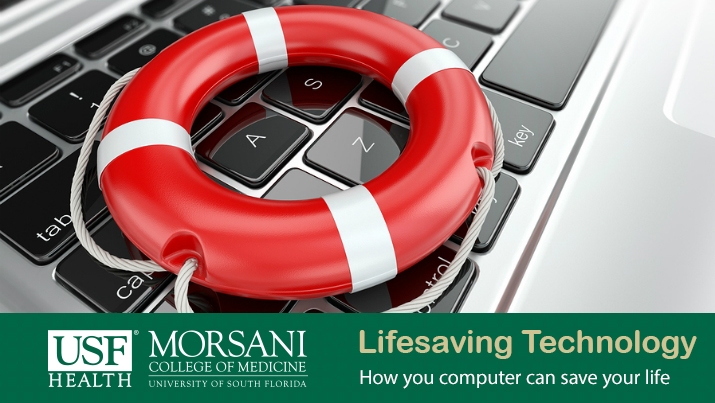Today’s technology – smartphones, tablets, laptops and computers – has shifted many people into a “self-help” mode in which a few clicks and swipes puts decision-making information and power at their fingertips. Patients are adopting that same sense of personal responsibility toward their own healthcare and wellbeing. Some experts call it “engagement.” By implementing patient engagement strategies on their own terms, through the use of technology, patients are able to better understand their health condition, communicate more effectively with their healthcare providers, make informed decisions, educate family members and friends, and know how to find support when they need it.
6 Patient Engagement Strategies to Implement On-Demand
A Personal health revolution is taking place. With that in mind, here are six ways patients can use their mobile devices to become more engaged in their healthcare.
Google Searches for Diagnosing Health Conditions
Internet search engine results have caused more than a few headaches for people who have had a headache and tried to diagnose their malady. They rush in to see their physicians, having self-diagnosed themselves into a frenzy. Physicians jokingly say a patient has seen “Dr. Google.” But today the Google search engine website has a real doctor overseeing health-related matters. Roni Zeiger is the chief health strategist at Google. Now when someone searches their symptoms, the algorithms produce a list of possible related conditions so the user can better refine their search and look for credible sources of information.
Social Media as a Connected Global Brain
Because social media has a real-time connective power, it has the potential to develop into a massive digital brain capable of transmitting, sharing and storing medical information, medical futurist Bertalan Mesko wrote in an article for CNN. If partnered with reliable sources from the medical community, these sites could readily provide information and records, and alter the future of medicine.
Improving Wellbeing with Wearable Health Technology
Wearable health technology – devices typically worn like wristbands and watches that track biometrics – has been widely adopted in recent years and has seen many manufacturers enter the space. Jawbone’s Up wristband hardware and software tracks user movement and sleep, and gives basic health advice. New ideas, including ones that could save your life, are moving toward production all the time. For example, Zach Vorhies, a cyclist in San Francisco is developing his product, Turn Signal Gloves, in order for cyclists to better signal their intentions in traffic and reduce the number of cyclist deaths each year. When the cyclist puts his left thumb against his index finger, creating contact between two small metal plates, lights on the backside of the left-hand glove illuminate, signaling his next turn, according to an article by CNBC.
Responidng to Disasters with Smartphones
This one is no surprise as most people know they can call or text for help with a mobile phone. But this bit of information about that impact may be surprising: The International Federation of Red Cross, using data from 2013, reported that globally there were 22,452 deaths connected to natural disasters, the lowest number in a decade and about one-fourth of the average annual total.
Aid officials touted the variety of platforms, such as Facebook and Twitter, which they are able to monitor. Through those platforms, aid officials are better able to understand where and how support should be delivered. Phones also allow those caught up in a disaster to update loved ones on their status.
Digital technologies have become an integral part of operations for disaster preparedness, mitigation, response and recovery,” the IRFC report said. “Although they have been around for three decades and are widely used, several new trends cause great excitement: increases in accessibility, connectivity, usability and open-source technology; and fusion of networks, hardware, applications, social media and mapping platforms.”
Suicide Prevention Improvements
Suicide remains one of the leading causes of death in the United States, ranked 11th with more than 33,000 deaths in 2009, according to the Center for Disease Control. Traditional methods of outreach – mailings, brochures, radio/TV/newspaper ads and billboards – are now bolstered by websites that supply information about counseling, treatment resources and other services. Beyond information, these sites also can provide more connectivity. Visitors to a site might hear audio or watch a video of suicide survivors detailing their experiences, furthering user engagement. Social media sites allow for more supportive interaction between people coping with similar challenges.
FaceTime for Stroke Patients
The FaceTime app allows users to chat via video on a smartphone, tablet or computer. This real-time app makes it possible for stroke specialists to communicate with patients without the need for an office visit. In fact, a study conducted at Emory University showed that stroke specialists who assessed patients via the FaceTime app reached the same conclusions as those specialists who assessed patients in person. FaceTime is a practical alternative for rural healthcare facilities that might not have stroke specialists available. Also, it can be a time-saver for doctors and patients, sometimes with life-saving results. Certain drugs, when administered to patients in the appropriate window of time, reduce the debilitating effects of a stroke.



